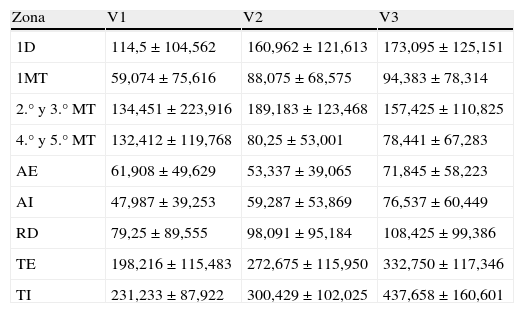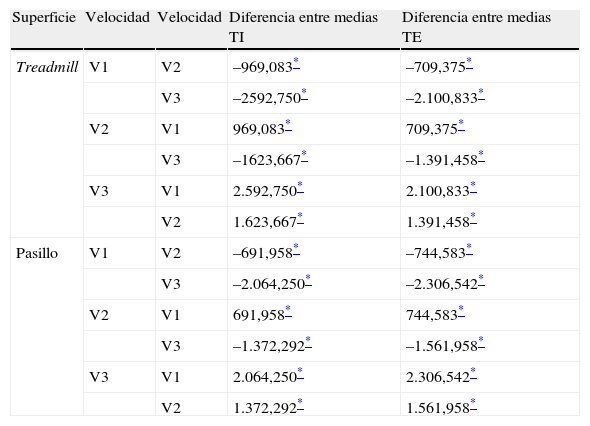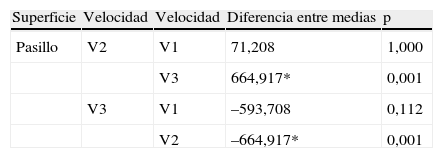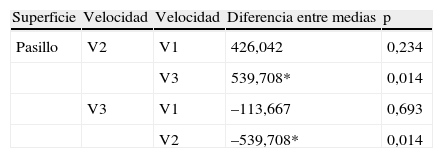La evaluación clínica de la presión plantar durante la marcha se realiza tanto en cinta rodante como en pasillo de marcha. Sin embargo, las posibles diferencias en el patrón de presiones plantares entre ambos medios no está totalmente esclarecido. El objetivo del presente estudio ha sido evaluar el efecto de la cinta rodante sobre las presiones plantares a tres velocidades de marcha (lenta, media y alta). Participaron 25 sujetos sanos. Para registrar las presiones plantares se utilizó un sistema de plantillas instrumentadas Biofoot/IBV que se colocaban en un calzado deportivo estándar. La cinta rodante utilizada fue un BH fitness modelo ColumbiaPro de 1.600 W de potencia y el pasillo de marcha tenía unas dimensiones de 12 m de largo por 2 m de ancho. Tras verificar la normalidad de los datos mediante la prueba de Kolmogorov-Smirnov y la homocedasticidad mediante la prueba de Levene, se realizó un análisis de la varianza (ANOVA) de dos factores (superficie y velocidad) y de medidas repetidas, fijando el nivel de significación en el 95% (p ≤ 0,05). Los resultados mostraron diferencias (p<0,05) cinta vs pasillo, fundamentalmente en el talón y el arco externo, observándose además diferencias significativas en función de la velocidad. Se concluye que la cinta rodante modifica las presiones plantares con respecto a la situación normal de marcha (pasillo) y que dichas diferencias deberían tenerse en cuenta tanto en la evaluación clínica como en el diseño de plantillas y/u ortesis plantares.
The functional evaluation of plantar pressure is performed on the treadmill and on the ground. However, the differences in plantar pressure values between the treadmill versus normal walking on the ground have not been totally clarified. The aim of this study was to detect possible differences on plantar pressure induced by the treadmill with three different walking speeds (slow, mid and high). Twenty-five healthy subjects participated in the study. Biofoot/IBV insoles were used to record plantar pressure on a standard sport shoe. The treadmill used was a BH fitness model, ColumbiaPro with 1600W power and the ground used was 12m long and 2m wide. After confirming the data normality by the Kolmogorov-Smirnov test and homoscedasticity by the Levene test, a two-factor analysis of variance (ANOVA) (kind of surface and velocity) and repeated measures was performed. Significance level was established at 95% (P≤.05). The most important results showed difference (P<.05) in treadmill vs. ground, fundamentally in the heel and outer arch. Significant differences were also observed based on speed. In conclusion, treadmill induces modifications on the plantar pressures respect the normal way of walking on the ground. These differences must be taking into account in the clinical evaluation and in the design for good insoles and/or plantar orthotics.
Artículo
Si ya tiene sus datos de acceso, clique aquí.
Si olvidó su clave de acceso puede recuperarla clicando aquí y seleccionando la opción "He olvidado mi contraseña".Comprando el artículo el PDF del mismo podrá ser descargado
Precio 19,34 €
Comprar ahora














